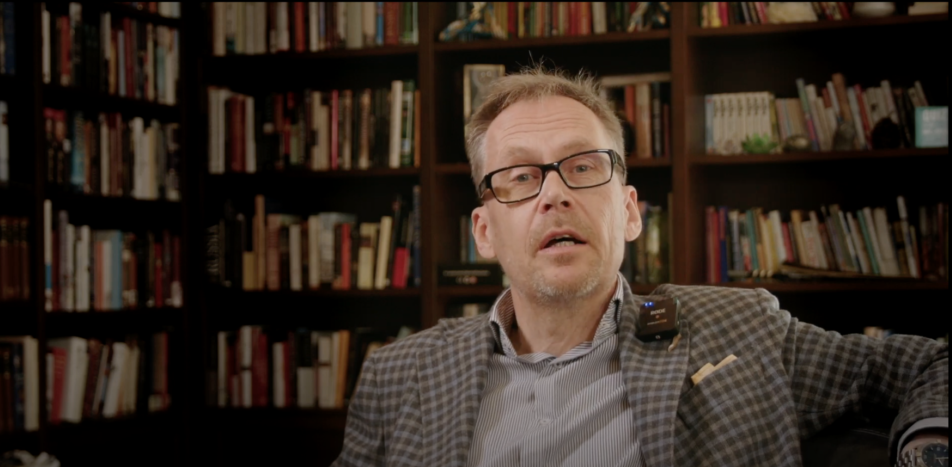Category Archives: General
Openness, Adoption, Continuity: You’ve heard me repeating our mantra like a broken record. Today is the next episode – and the theme du jour is about our Board Meetings, which we have minuted publicly on https://mariadb.org/bodminutes/ since October 2020.
At last Wednesday’s Board Meeting, we made quite a few important decisions – let me draw your attention to them in this separate blog entry.
Ex officio: Michael Widenius and Sergei Golubchik
First, we properly documented the special role of our founding Board members, Michael Widenius and Sergei Golubchik.
…
Focus, focus, focus! That’s the mantra of any successful organisation. With great input from our Board, we’ve managed to condense our strategic planning for 2025 into six goals.
Refiguring the process – from descriptive to prescriptive
Our goal setting started from mapping out our activities 2024. I asked myself: “How can we describe what we do on one page?”. There were 38 activities – think “Scrum Epics” – in 6 areas.
Guess what? That’s too many. No Board member is interested in that level of detail. Oh well, I should have known.
Back to the drawing board.
…
Continue reading “This month in MariaDB Foundation: Jan 2025”
New Year’s Eve is when everyone takes stock of the year that has passed. At MariaDB Foundation, we’re no different.
The technical highlight: MariaDB Vector
It’s not hard to pick the technical MariaDB highlight of the year: It’s MariaDB Vector.
No big surprise there: The biggest new thing in IT is AI. AI is getting mainstream. Mainstream applications need databases. Databases need stability, performance, ease of use. And low cost.
The solution: MariaDB Server. It’s relational. It’s standard. It’s Open Source.
The business highlight: MariaDB plc on a solid footing
It’s equally easy to pick the business MariaDB highlight of the year: K1 taking over MariaDB plc.
…
Continue reading “MariaDB highlights in 2024: Vectors, K1, and contributions”
From near and from far, the same thing – in this case MariaDB plc – can look quite different. It’s all doom and gloom in an Infoworld article on MariaDB plc Can MariaDB’s enterprise business be saved? and its French translation in Le Monde Informatique L’activité entreprise de MariaDB bientôt liquidée ?
The turbulence seems exaggerated
True, our mission to provide Continuity is there to give users – including MariaDB plc customers – the confidence needed to continue using MariaDB Server under all circumstances. However, the turbulence portrayed in the press gives an unnecessarily bleak picture.
…
Continue reading “MariaDB plc – looking forward to business as usual”
Our Sea Lion celebrates the end of a successful year, with a touch of Christmas spirit. We asked our AI Santa to create artwork that “evokes a sense of gratitude, optimism, and the magic of the holidays beneath the waves” – let me accompany the outcome with some reflections on the successful ending of the year.
Homework: What makes you feel good?
The trigger for the reflections was the last team Zoom meeting of the year, on Tuesday. I had asked everyone to prepare by doing a personal recap of what has happened the last three months (basically since our Staff meeting, (Un)conference, and MariaDB Server Fest early October).
…
Remember our open letter, Looking for MySQL 5.7 or 8.0 guinea pigs?
We caught a nice German guinea pig!
We caught a nice guinea pig, a German one, from Hannover. They are currently using MySQL 5.7 (as was our prime wish), and they will be doing a live migration to MariaDB 10.11. They have 1.000.000.000 queries a day, their database size is 412 GB, and our goal is to the migration of the production data in less than five minutes – during our MariaDB Migration Workshop at our pre-FOSDEM event on Friday 2 Feb 2024.
…
“Generative AI is a can of worms that has to be opened”. That was the laconic comment from a senior industry influencer, when I shared MariaDB Foundation’s plans for successively making MariaDB Server a platform for AI solutions. The statement combines the opportunity with the inevitability, the complexity with the need for stepwise refinement.
Late to the game?
Are we late to the game? I believe not. I believe this is the right timing. Open Source isn’t a pioneer when it comes to basic research or even early product development.
…
MariaDB Server has lots of energy and potential to increase its impact amongst Open Source RDBMSes. As the CEO of MariaDB Foundation, I’m happy to note that I can finally share a positive outlook for the next chapters in the story of MariaDB Server, based on what is happening with its namesake commercial entity, MariaDB plc. After years of missed opportunities, let me share with you why and how I have entered into this positive mood.
The Foundation and the plc are two separate entities …
Let me begin by reiterating what is clear only to those following MariaDB Server very closely, namely that MariaDB Foundation and MariaDB plc are two separate entities, with separate governance, separate staff, and separate – although not conflicting – goals.
…
Continue reading “A positive new chapter for MariaDB Server”







